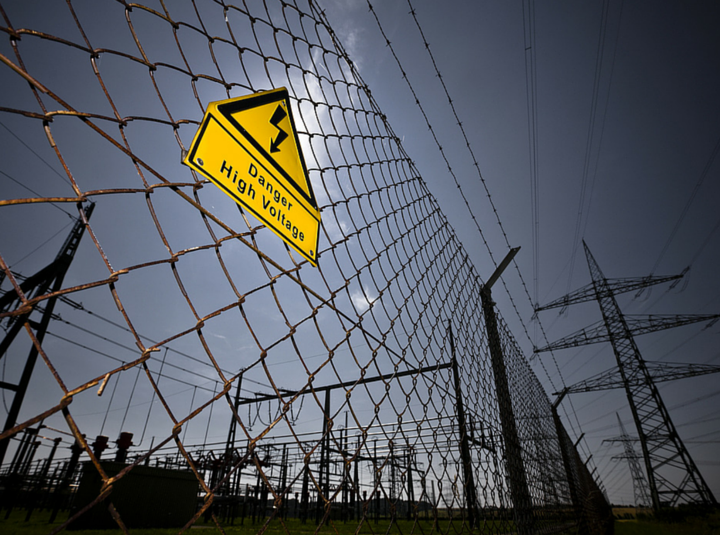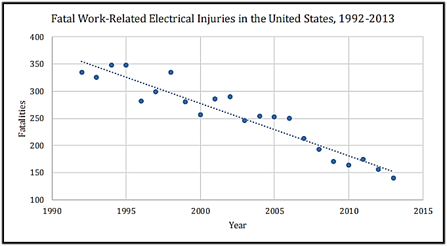- Electrical Training
- Safety
- Electrical Compliance
- Electrical Automation
- Electrical Maintenance
- Mechanical Training
- HVAC
- Codes and Standards
- Fluid Power
- Maintenance
- View All Training Programs
-
View All Electrical Safety Training ProgramsTop Electrical Safety Training Programs
- Arc Flash Electrical Safety [Based on NFPA 70E®]
- Electrical Safety: NFPA 70E Retraining
- Electrical Safety Awareness
- Electrical Safety Practical Skills for Switchgear
- Electrical Safety: Power Generation, Transmission & Distribution [based on OSHA 1910.269]
- Seguridad Eléctrica en el centro de trabajo, [Basado en el manual NFPA 70E® 2021]
Upcoming Training Programs- 05/20 - 05/21 : Virginia Beach , VA Arc Flash Electrical Safety [Based on NFPA 70E®]
- 06/03 - 06/04 : Live Online Training , CO Arc Flash Electrical Safety [Based on NFPA 70E®]
- 06/03 - 06/04 : Baltimore , MD Arc Flash Electrical Safety [Based on NFPA 70E®]
- 06/07 - 06/07 : Live Online Training , CO Electrical Safety: NFPA 70E Overview - NEW!
- 06/10 - 06/11 : Philadelphia , PA Arc Flash Electrical Safety [Based on NFPA 70E®]
-
View All Electrical Electrical Compliance Training ProgramsTop Electrical Electrical Compliance Training Programs
- 2020 NFPA 70® – National Electrical Code® [NEC]
- 2023 NFPA 70® – NATIONAL ELECTRICAL CODE® [NEC]
- Electrical Systems: SOARS Grounding & Bonding
- Electrical Systems: Hazardous Locations
- NEC® – Analysis of Changes 2020 with Practical Exercises
- NFPA 110® – Emergency & Standby Power Systems
- NFPA 70B® Standard Overview
- NFPA 70B® – Standard For Electrical Equipment Maintenance®
- NFPA 72: National Fire Alarm & Signaling Code®
- 2021 NFPA 79® – Electrical Standard For Industrial Machinery®
- NICET I & II
- National Electrical Safety Code® [NESC]
- NEC® – Analysis of Changes 2023
Upcoming Training Programs- 05/22 - 05/24 : Virginia Beach , VA 2023 NFPA 70® – NATIONAL ELECTRICAL CODE® [NEC]
- 05/22 - 05/23 : Live Online Training , CO NICET I & II
- 05/22 - 05/23 : Live Online Training , CO NEC® – Analysis of Changes 2023
- 06/05 - 06/07 : Baltimore , MD 2023 NFPA 70® – NATIONAL ELECTRICAL CODE® [NEC]
- 06/05 - 06/07 : Live Online Training , CO 2023 NFPA 70® – NATIONAL ELECTRICAL CODE® [NEC]
-
View All Electrical Electrical Automation Training ProgramsTop Electrical Electrical Automation Training Programs
- Instrumentation & Process Control
- PLCs [Programmable Logic Controllers]: Automation Systems
- PLCs [Programmable Logic Controllers]: ControlLogix & RSLogix 5000
- PLCs [Programmable Logic Controllers]: Fundamentals
- PLCs [Programmable Logic Controllers]: Siemens Simatic S7
- Tuning DDC/Process Control Loops
- Variable Frequency Drives [VFD]
Upcoming Training Programs- 05/21 - 05/23 : Centennial , CO Variable Frequency Drives [VFD]
- 05/29 - 05/31 : Centennial , CO Instrumentation & Process Control
- 06/03 - 06/05 : Phoenix , AZ PLCs [Programmable Logic Controllers]: Fundamentals
- 06/04 - 06/06 : Reno , NV Variable Frequency Drives [VFD]
- 06/06 - 06/07 : Phoenix , AZ PLCs [Programmable Logic Controllers]: Automation Systems
-
View All Electrical Electrical Maintenance Training ProgramsUpcoming Training Programs
- 05/29 - 05/31 : Elk Grove , IL Fiber Optics
- 06/04 - 06/05 : Houston , TX Basics of Industrial Electricity
- 06/05 - 06/06 : Centennial , CO Electrical Print Reading: Blueprints & Schematics
- 06/06 - 06/07 : Houston , TX Electrical Motor Control Circuits: Troubleshooting
- 06/07 - 06/07 : Live Online Training , CO Electrical Safety: NFPA 70E Retraining
-
View All Mechanical HVAC Training ProgramsTop Mechanical HVAC Training Programs
- Balancing of Water and Air Systems
- Boilers: An Operational Workshop
- HVAC: Brazing [Advanced]
- Air Conditioning & Refrigeration: Advanced
- HVAC: Air Conditioning & Refrigeration
- HVAC: Principles of Heating & Ventilation
- Chillers: Operation & Maintenance of Chilled Water Systems
- Steam Distribution Systems
- Water Treatment for Boilers and Chilled Water Systems
Upcoming Training Programs- 05/21 - 05/23 : Las Vegas , NV HVAC: Air Conditioning & Refrigeration
- 05/21 - 05/23 : Centennial , CO Boilers: An Operational Workshop
- 05/21 - 05/23 : Sacramento , CA Chillers: Operation & Maintenance of Chilled Water Systems
- 06/04 - 06/06 : Saint Louis , MO HVAC: Air Conditioning & Refrigeration
- 06/11 - 06/13 : Reno , NV HVAC: Air Conditioning & Refrigeration
- View All Mechanical Codes and Standards Training Programs
-
View All Mechanical Fluid Power Training ProgramsUpcoming Training Programs
- 05/28 - 05/31 : Centennial , CO Hydraulics & System Troubleshooting
- 06/11 - 06/14 : Centennial , CO Hydraulics & System Troubleshooting
- 06/25 - 06/27 : Centennial , CO Centrifugal Pumps
- 07/23 - 07/26 : Houston , TX Hydraulics & System Troubleshooting
- 08/13 - 08/16 : Phoenix , AZ Hydraulics & System Troubleshooting
-
View All Mechanical Maintenance Training ProgramsUpcoming Training Programs
- 06/11 - 06/13 : Centennial , CO Mechanical Drives & Power Transmission
- 07/30 - 07/31 : Centennial , CO Electric Motors: Understanding & Troubleshooting
- 08/06 - 08/07 : Centennial , CO Principles of Bearings & Lubrication
- 08/08 - 08/09 : Centennial , CO Shaft Alignment with Laser Technology
- 09/17 - 09/19 : Centennial , CO Mechanical Drives & Power Transmission
Select the following link if you would like to recover a report that has been previously deleted.
NTT Blog

07/27/2015
Understanding the Shock and Arc Flash Stats
The numbers show big improvements! Preventing electrical injuries in the workplace will always be a major focus in industrial safety training. Dr. Richard B. Campbell of NFPA and David A. Dini assembled the research paper on electrical accidents Occupational Injuries from Electrical Shock and Arc Flash Events. The report presents some interesting findings in regards to electrical safety trends within the United States.
It may come as no surprise that, “many workers who experience electrical injury have insufficient training for working on or around energized electrical equipment.” The report goes on to say, “production pressures, as well as inconsistency in training and communication, were identified by workers as factors that played a role in the arc flash incidents.”[1] By keeping employees up-to-speed, it not only keeps people safe, it also results in cost savings from reduced downtime and increased profits from higher productivity
There has been a positive trend over recent years; electrocutions have decreased by over 50% since 1992. We no longer have to confess that, “On average, one worker a day is electrocuted on the job.” However, like all statistics there are issues. An HVAC tech on a rooftop injured or worse by electricity is probably not considered an electrical worker by the SIC codes. The accident appears in the statistics but such data can be slightly skewed so let’s not get hung up on trying to interpret the statistical data and instead look at the overall results.
 Figure 1: Fatal Work-Related Electrical Injuries in the United States, 1992-2013
Figure 1: Fatal Work-Related Electrical Injuries in the United States, 1992-2013
The report Occupational Injuries from Electrical Shock and Arc Flash Events goes on to advocate for electrical safety training suggesting, “Available evidence indicates that better compliance with existing NFPA 70E requirements would reduce a substantial share of electrical injuries in U.S. workplaces.”[1] It’s been documented that there has been an overall drop in work-related electrical injuries in the U.S. in recent years. Having available information such as this allows leadership to make better-informed decisions for on-going improvements to workplace best practices and safety policies. Further, company leaders are starting to use this information to make better-informed decisions for on-going improvements to workplace best practices and safety policies.

The implementation of safe work practices through electrical safety training is having a positive effect across industries and we hope this trend continues. When it’s all said and done, safety is at the core of any successful industrial business. Safer workers yield stronger companies!
To discuss how you can implement Electrical Safety Training into your companies training program, call (855) 712-7353 or contact NTT Training today!
[1] Occupational Injuries from Electrical Shock and Arc Flash Events by Dr. Richard B. Campbell and David A. Dini: http://www.nfpa.org/~/media/files/research/research-foundation/research-foundation-reports/electrical/rfarcflashoccdata.pdf
Recent Blog Posts
- Confined Space Entry: How to Ensure Safe and Successful Operations
- How To Start a PM Program
- Confined Space Programs
- Are You Using PPE the Right Way?
- Why company-wide buy-in is critical to a successful CMMS program and movement to a better preventative maintenance schedule.
- Categories
- Uncategorized (18)
- Electrical Training Programs (93)
- Code & Standards (28)
- Electrical Maintenance (17)
- Mechanical HVAC (8)
- Safety (39)
- Mechanical Training Programs (74)
- Code & Standards (10)
- Electrical Safety (8)
- HVAC (17)
- Maintenance (19)
- Fluid Power (19)
- News (13)
- Onsite Training (2)
- Contractor Management (1)
- National Electric Code (5)
- OSHA Rules and Requirements (18)
- General Safety Tips (3)
- Industrial Safety (4)
- Plumbing Standards (2)
- Electrical Blueprint Reading (6)
- Natural Gas Safety (3)
- Ultrasonic Testing (1)
- PLC (10)
- High Voltage (3)
- Oil Analysis (2)
- Centrifugal Pumps (4)
- Variable Frequency Drives (6)
- Welding Safety (7)
- Chillers (3)
- Hazardous Locations (5)
- Confined Spaces (6)
- Infrared Thermography (2)
- NFPA 72 (4)
- Process Control Loops (3)
- Backflow Prevention (1)
- Electrical Grounding (2)
- Industrial Circuits (2)
- Boilers (5)
- Shaft Alignment (3)
- Hoisting and Rigging (3)
- Fiber Optics (5)
- Refrigeration (1)
- Arc Flash (8)
- NFPA 110 (1)
- Conveyor Systems (1)
- NFPA 70E (2)
- Process Instruments (1)
- Vibration Analysis (1)
- Industrial Generators (1)
- Life Safety Code (1)
- Electrical Switchgear (1)
- NFPA 79 (1)
- Steam Distribution Systems (1)
- Preventative Maintenance (1)
Filter Blogs
- August 2023 (1)
- July 2023 (1)
- June 2023 (1)
- April 2023 (1)
- March 2023 (1)
- February 2023 (1)
- December 2022 (1)
- October 2022 (1)
- August 2022 (1)
- July 2022 (1)
- October 2019 (9)
- September 2019 (8)
- August 2019 (9)
- July 2019 (8)
- June 2019 (8)
- May 2019 (9)
- April 2019 (9)
- March 2019 (7)
- February 2019 (4)
- January 2019 (9)
- December 2018 (7)
- November 2018 (7)
- October 2018 (9)
- September 2018 (6)
- August 2018 (7)
- July 2018 (9)
- June 2018 (8)
- May 2018 (9)
- April 2018 (9)
- March 2018 (8)
- February 2018 (8)
- January 2018 (9)
- December 2017 (9)
- November 2017 (8)
- October 2017 (9)
- September 2017 (8)
- August 2017 (7)
- July 2017 (5)
- June 2017 (7)
- May 2017 (8)
- April 2017 (3)
- March 2017 (7)
- February 2017 (3)
- January 2017 (4)
- December 2016 (7)
- November 2016 (4)
- October 2016 (7)
- September 2016 (5)
- August 2016 (6)
- June 2016 (1)
- May 2016 (2)
- April 2016 (2)
- March 2016 (1)
- January 2016 (2)
- October 2015 (1)
- August 2015 (1)
- July 2015 (3)
- May 2015 (1)
- March 2015 (1)
- January 2015 (3)
- April 2014 (4)
Our Mission:
"Deliver solutions to our clients (and their global workforce) designed for safety, productivity and profitability.”
NTT Training Inc. has been accredited by the Accrediting Council for Continuing Education & Training (ACCET). ACCET accreditation serves the interests of companies, agencies, and the public through the establishment of standards, policies, and procedures in conjunction with an objective third-party professional evaluation designed to identify and inspire sound education and training practices. 
 Better Business Bureau
Better Business Bureau
A Training Division of ECPI University
